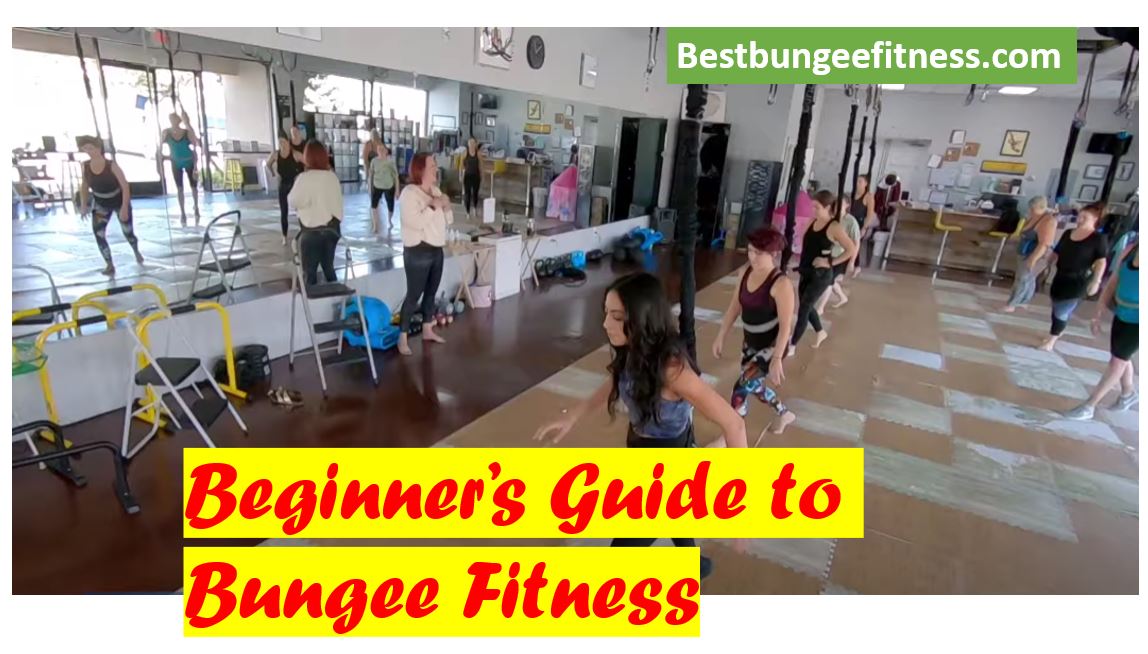Bungee fitness is an innovative workout that combines resistance training with the exhilaration of aerial movement. Participants are harnessed to bungee cords, allowing for dynamic, low-impact exercises that enhance strength, flexibility, and cardiovascular health. This form of fitness is gaining popularity for its ability to provide a full-body workout that’s both effective and fun.
In this comprehensive guide, we’ll explore what bungee fitness entails, its benefits, potential risks, what to expect in a class, and tips for getting started.
What is Bungee Fitness?
Bungee fitness involves performing exercises while attached to a bungee cord that’s anchored to the ceiling. The harness and cord system allows for a range of motion that includes jumping, lunging, and even flying through the air. This setup provides resistance and support, making movements more dynamic and reducing impact on the joints. Classes often incorporate elements from dance, aerobics, and strength training, creating a versatile and engaging workout.
Benefits of Bungee Fitness
1. Low-Impact, High-Intensity Workout
Bungee fitness offers a cardiovascular workout that’s gentle on the joints. The support from the bungee cord reduces stress on knees, hips, and ankles, making it suitable for individuals with joint concerns or those recovering from injuries.
2. Full-Body Engagement
The instability introduced by the bungee cord requires constant engagement of core muscles to maintain balance. Additionally, exercises target the glutes, legs, and upper body, providing a comprehensive workout.
3. Enhanced Flexibility and Coordination
The dynamic movements in bungee fitness improve flexibility and coordination. Participants often experience increased range of motion and better body awareness over time.
4. Mental Health Benefits
Engaging in bungee fitness can boost mood and reduce stress. The fun and novelty of the workout release endorphins, contributing to improved mental well-being.
Who Can Participate?
Bungee fitness is accessible to a wide range of individuals, including beginners and seasoned athletes. However, certain conditions may require caution:
- Pregnancy: The harness places pressure on the abdomen and lower back, which may not be advisable during pregnancy.
- Recent Surgeries or Injuries: Individuals recovering from surgery or with existing injuries should consult a healthcare provider before participating.
- Weight Restrictions: Some studios have weight limits due to equipment specifications.
What to Expect in a Bungee Fitness Class
1. Orientation
First-time participants usually attend an introductory session to learn safety protocols, proper harness fitting, and basic movements.
2. Warm-Up
Classes begin with a warm-up to prepare the body for dynamic movements.
3. Core Workout
The main session includes a variety of exercises such as squats, lunges, push-ups, and jumps, all enhanced by the bungee’s resistance and support.
4. Cool Down
Classes conclude with stretching and cool-down exercises to aid recovery.
Tips for Getting Started
- Wear Appropriate Attire: Fitted, moisture-wicking clothing is recommended. Avoid loose garments that could get tangled in the equipment.
- Stay Hydrated: Bring a water bottle to stay hydrated throughout the class.
- Listen to Your Body: It’s normal to feel sore after the first few sessions. However, if you experience pain, consult an instructor or healthcare provider.
- Communicate with Instructors: Inform your instructor of any health concerns or limitations before class.
Conclusion
Bungee fitness offers a unique and enjoyable way to engage in physical activity. Its combination of cardio, strength training, and aerial movement provides a comprehensive workout that’s gentle on the joints and beneficial for mental health. Whether you’re new to exercise or looking to diversify your fitness routine, bungee fitness presents an exciting opportunity to challenge your body and have fun in the process.
As with any new exercise program, it’s important to consult with a healthcare provider, especially if you have existing health concerns. With proper guidance and a willingness to try something new, bungee fitness can be a rewarding addition to your fitness journey.
For a visual introduction to bungee fitness, you might find this video helpful:
Beginner’s Experience with Bungee Fitness
There aren’t many workouts you can just jump right into—literally. But Bungee Fitness flips that script. At Tough Lotus, owner Cherry Pruitt introduces an exciting new way to exercise that combines strength, cardio, and a lot of fun. It’s a workout designed to take your fitness routine to new heights.
Trust the Bungee
First things first: trust the bungee. It’s going to hold you—it’s designed to support your body weight. The studio is equipped with weight-bearing pipes in the ceiling, and the bungee cords can hold up to 400 pounds. Although it may feel a little awkward at first, bungee fitness is a skill that builds over time.
Cherry emphasizes that it’s not something you’ll master instantly. ‘It’s not something that you come in and you’re going to be amazing at right away—you just have to love doing it,’ she explains.
Building Endurance
Despite your feet spending more time off the ground, you’re not working out any less. Bungee fitness is great for improving endurance. Even athletes involved in endurance training benefit from it. As Cherry puts it, ’30 seconds on the bungee is like two minutes of cardio anywhere else.’
Learning the Basics
The first thing you’ll learn in class is proper footing. Movements are broken down into steps: ‘5, 6, 7, 8—right, left, right—and right, left, right again.’ Getting your footing down is crucial, as it’s the foundation for everything that comes next.
Cherry explains that movements typically occur in three points—you move away from your anchor on the bungee, and then back toward it. Once you’ve learned the basics, you can start incorporating jumps and dives.
Adapting to Movement
Your body moves in a completely different way on the bungee, and it takes some getting used to. Even dancers with strong body control need time to adjust. Instead of staying on your toes, you must keep your center of gravity low.
Growing More Comfortable
As you get more comfortable, new moves are introduced. You’ll lift your arms and legs, jump, and even spin. Some moves help you tone and firm, while others simply make you feel like Elsa—or even Peter Pan. Consistency is key to mastering the movements and building confidence.
Other Articles about Bungee fitness you might be interested
What are the Benefits and Risks of Bungee fitness?
Bungee Workout for Seniors: A Fun, Safe, and Effective Exercise Option for Older Adults





